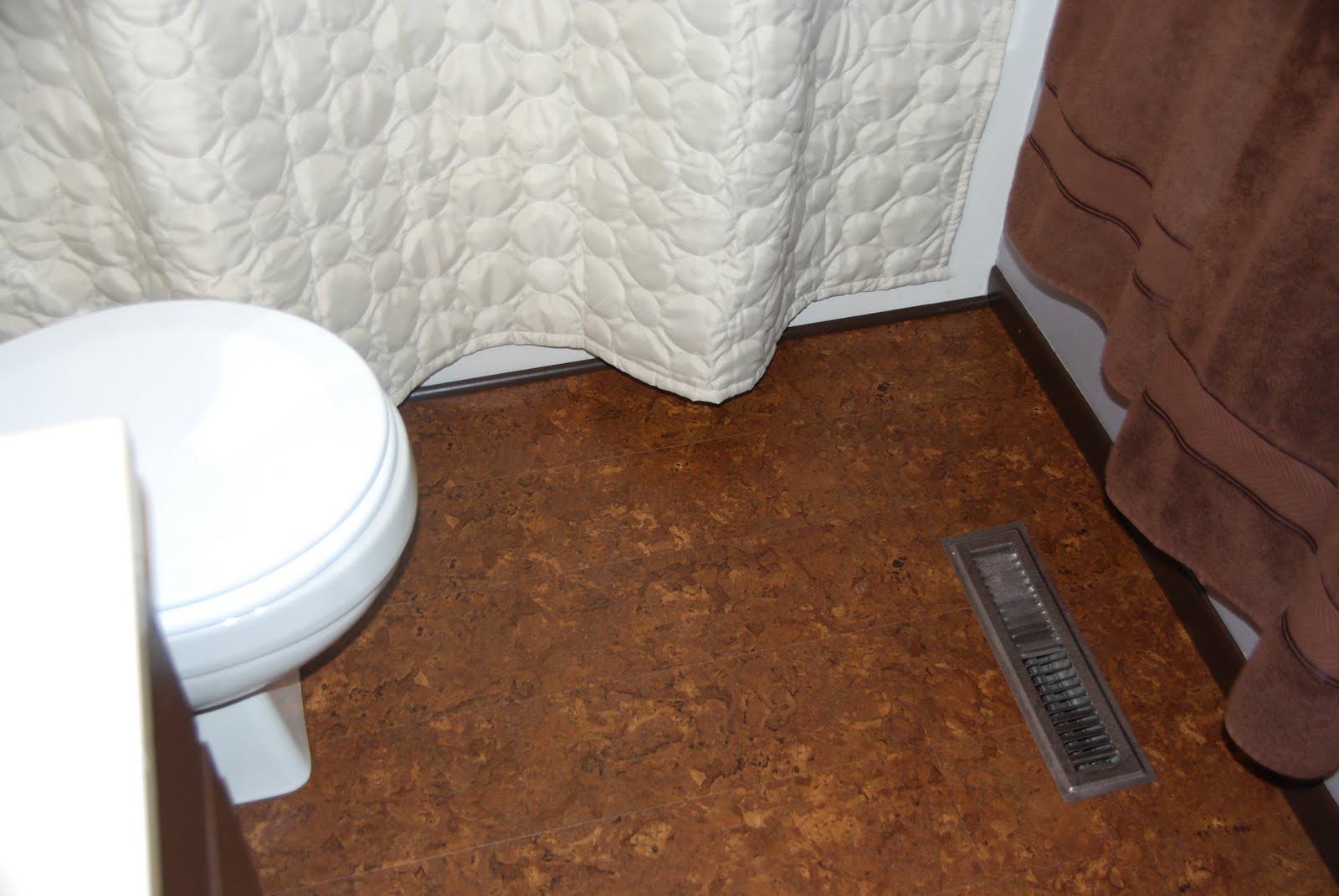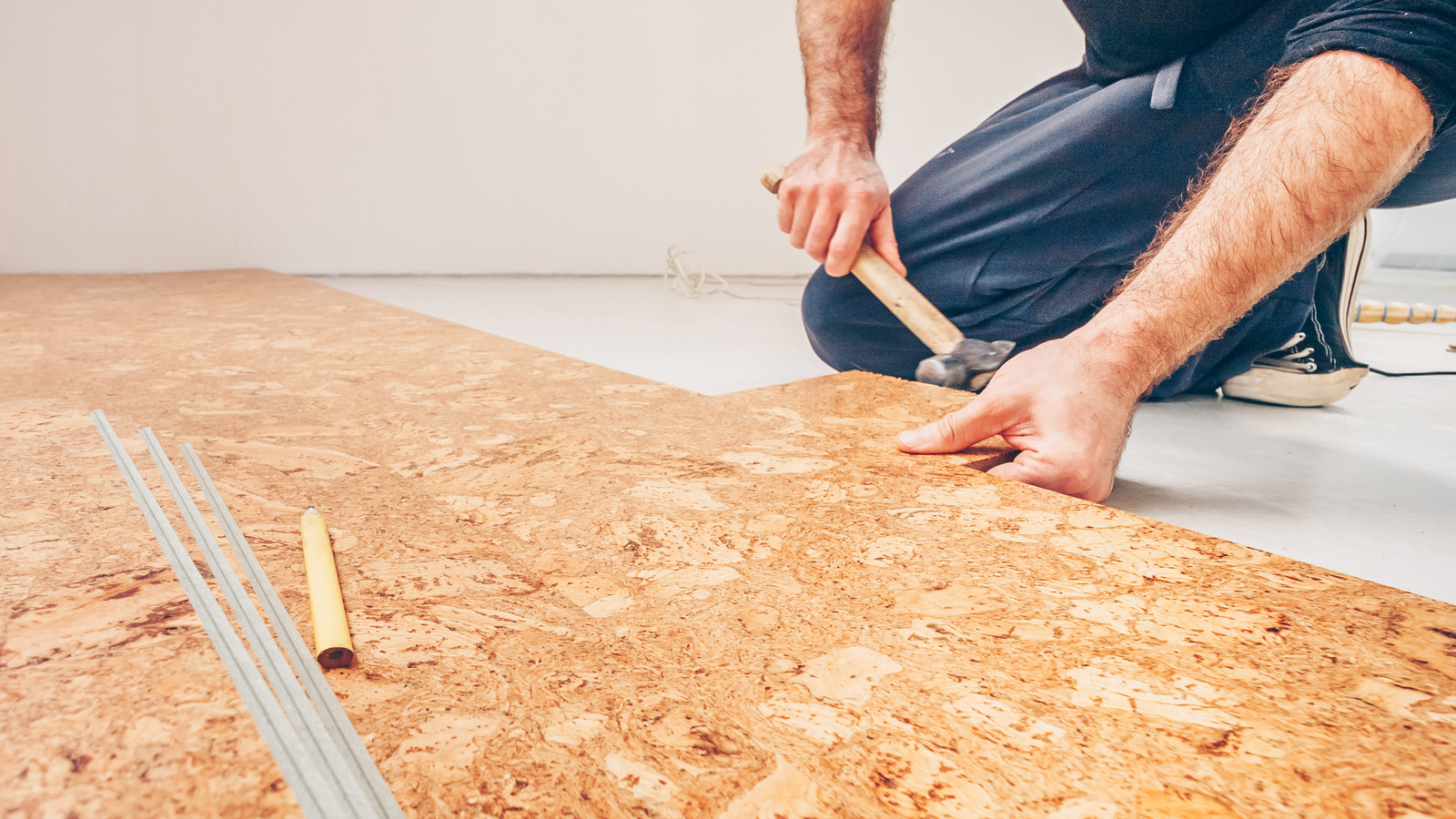Cork Flooring in Bathrooms

Cork flooring is becoming increasingly popular in bathrooms due to its unique properties and aesthetic appeal. It offers a natural and sustainable alternative to traditional bathroom flooring options like tile and vinyl.
Cork Flooring in Bathrooms: Advantages and Considerations
Cork flooring is a naturally water-resistant material, making it a suitable choice for bathroom environments. The cork’s cellular structure allows it to absorb moisture and then release it back into the air, preventing water from penetrating the floorboards. However, it’s crucial to select a high-quality, sealed cork flooring specifically designed for bathroom use. This ensures the flooring can withstand the constant exposure to moisture and prevent water damage.
Cork Flooring in Bathrooms: Advantages
Cork flooring offers several advantages for bathroom use:
- Water Resistance: Cork’s cellular structure makes it naturally water-resistant, allowing it to absorb and release moisture. This prevents water from penetrating the floorboards and causing damage.
- Mold Resistance: Cork’s natural antimicrobial properties inhibit the growth of mold and mildew, creating a healthier and more hygienic bathroom environment.
- Softness and Comfort: Cork flooring provides a soft and comfortable underfoot experience, reducing foot fatigue and providing a warm and inviting atmosphere in the bathroom.
- Sound Absorption: Cork flooring effectively absorbs sound, reducing noise levels in the bathroom and creating a more peaceful environment.
- Sustainability: Cork is a renewable and sustainable resource, harvested from the bark of the cork oak tree without harming the tree. This makes cork flooring an environmentally friendly choice.
Cork Flooring in Bathrooms: Considerations
While cork flooring offers numerous benefits for bathrooms, it’s important to consider some potential drawbacks:
- Cost: Cork flooring can be more expensive than traditional bathroom flooring options like tile or vinyl.
- Maintenance: Cork flooring requires regular cleaning and sealing to maintain its water resistance and prevent damage. However, with proper care, cork flooring can last for many years.
- Scratch Resistance: Cork flooring is relatively soft and can be susceptible to scratches, especially from heavy furniture or sharp objects.
- Water Damage: While cork is water-resistant, it’s not waterproof. Excessive water exposure can lead to damage, so it’s important to address spills promptly and ensure proper ventilation in the bathroom.
Cork Flooring in Bathrooms: Comparisons
Cork flooring compares favorably to other popular bathroom flooring options:
- Tile: Tile is a durable and water-resistant flooring option, but it can be cold and hard underfoot. Cork flooring offers a warmer and softer alternative while still being water-resistant.
- Vinyl: Vinyl flooring is a budget-friendly option, but it can be less durable than cork and may not offer the same level of comfort or sound absorption.
- Laminate: Laminate flooring is a durable and affordable option, but it’s not as water-resistant as cork and can be less comfortable underfoot.
Cork Flooring in Bathrooms: Maintenance and Cleaning
Maintaining cork flooring in a bathroom environment is crucial for its longevity.
- Regular Cleaning: Sweep or vacuum the floor regularly to remove dirt and debris. Use a damp mop with a mild cleaning solution to clean the floor, avoiding harsh chemicals or abrasive cleaners.
- Sealing: Seal the cork flooring regularly, typically every 12-18 months, to maintain its water resistance and protect it from stains. Use a high-quality sealant specifically designed for cork flooring.
- Water Spills: Address water spills promptly to prevent damage to the flooring. Blot up spills with a towel or sponge and allow the area to dry completely.
- Ventilation: Ensure proper ventilation in the bathroom to prevent moisture buildup and mold growth. Use a fan or open a window after showering or bathing.
Installation and Design Considerations for Cork Flooring in Bathrooms
:max_bytes(150000):strip_icc()/cork-flooring-pros-and-cons-1314688_cleaning_0040-d62159c2ce18440a9f2f035e64a9ac25.jpg)
Installing cork flooring in a bathroom can be a fantastic way to add warmth, comfort, and a touch of natural beauty to your space. But before you dive in, it’s essential to understand the nuances of cork installation in this high-moisture environment. This section delves into the practicalities of installation and explores design ideas to make your bathroom a haven of comfort and style.
Subfloor Preparation and Sealing
Proper subfloor preparation is crucial for a successful cork flooring installation. This step ensures a smooth, level surface for the cork tiles, preventing any future issues like unevenness or squeaking. Here’s a step-by-step guide:
- Clean the subfloor: Remove any debris, dirt, or dust from the subfloor. This ensures a clean and adhesive-friendly surface.
- Repair any damage: Address any cracks, holes, or unevenness in the subfloor. Use a patching compound or wood filler to repair these areas.
- Apply a moisture barrier: A moisture barrier is essential to protect the cork from water damage. You can use a vapor barrier membrane or a moisture-resistant paint to create a protective layer.
- Prime the subfloor: A primer will improve adhesion between the cork flooring and the subfloor. Use a primer specifically designed for cork flooring.
Cork Flooring Installation Methods, Using cork flooring in bathroom
There are two primary methods for installing cork flooring in bathrooms: floating installation and glue-down installation. The best method depends on your specific needs and the condition of your subfloor.
Floating Installation
This method involves installing cork tiles over a layer of underlayment, without attaching the tiles directly to the subfloor. This method is popular for its ease of installation and its ability to handle slight subfloor imperfections. However, it may not be suitable for areas with high foot traffic.
Glue-Down Installation
This method involves securing the cork tiles to the subfloor using a special adhesive. This method provides a more secure and stable installation, making it ideal for high-traffic areas. However, it requires careful subfloor preparation and a skilled installer to ensure a successful installation.
Design Ideas for Cork Flooring in Bathrooms
Cork flooring can be incorporated into your bathroom design in numerous ways, creating a space that is both stylish and functional.
Color Choices
Cork flooring comes in a wide range of colors, from natural shades of brown and beige to bolder tones like gray, green, and even black. Consider the overall color scheme of your bathroom and choose a cork color that complements your existing fixtures and décor. For a classic and timeless look, opt for neutral shades. For a more modern and bold statement, consider a darker or brighter color.
Patterns
Cork tiles are available in various patterns, including planks, squares, and even mosaics. Plank-style tiles create a traditional look, while square tiles offer a more contemporary feel. Mosaic tiles provide a unique and intricate design element.
Accessories
Cork flooring can be enhanced with accessories like rugs, mats, and bath mats. Choose accessories in complementary colors and textures to create a cohesive and stylish look.
Creating Seamless Transitions
To create a seamless transition between cork flooring and other bathroom surfaces, such as tile or grout, consider these tips:
- Use transition strips: Transition strips are available in various materials and styles, and they can help to create a smooth and even transition between different flooring types.
- Install a threshold: A threshold can be used to create a visually appealing and functional transition between the cork flooring and the rest of the bathroom.
- Match the grout color: If you are transitioning between cork flooring and tile, choose a grout color that closely matches the cork color. This will create a more seamless and cohesive look.
Cork Flooring: Using Cork Flooring In Bathroom

Cork flooring offers a unique blend of beauty, comfort, and sustainability, making it an excellent choice for bathroom floors. Beyond its aesthetic appeal, cork stands out as a remarkably eco-friendly flooring option, aligning perfectly with the growing demand for sustainable living.
Cork Flooring: A Sustainable and Eco-Friendly Choice for Bathrooms
Cork flooring is harvested from the bark of the cork oak tree, a renewable resource that grows naturally in the Mediterranean region. This harvesting process does not harm the tree, as the bark regenerates naturally, allowing for sustainable harvesting every 9-12 years. This sustainable harvesting practice ensures that cork oak forests remain healthy and continue to provide a valuable resource for generations to come.
Cork flooring is also biodegradable, meaning it decomposes naturally over time, unlike many synthetic flooring materials that can persist in landfills for centuries. Furthermore, cork production requires minimal energy and water, contributing to a smaller environmental footprint compared to other flooring options.
- Renewable Resource: Cork is harvested from the bark of the cork oak tree, which regenerates naturally every 9-12 years, making it a sustainable and renewable resource.
- Biodegradable: Cork flooring decomposes naturally over time, minimizing its environmental impact compared to synthetic flooring materials.
- Low Energy and Water Consumption: The production of cork flooring requires minimal energy and water, reducing its overall environmental footprint.
- Reduced Carbon Footprint: Cork oak forests absorb significant amounts of carbon dioxide, playing a vital role in mitigating climate change.
Cork flooring offers a healthier and more sustainable alternative to traditional bathroom flooring materials. Its natural composition and hypoallergenic properties make it an excellent choice for individuals with allergies or sensitivities.
- Hypoallergenic and Anti-Allergenic: Cork flooring is naturally hypoallergenic and anti-allergenic, reducing the risk of allergic reactions and promoting a healthier indoor environment.
- Moisture Resistance: Cork flooring is naturally moisture-resistant, making it suitable for humid bathroom environments.
- Thermal Insulation: Cork’s natural properties provide excellent thermal insulation, helping to regulate temperature and create a more comfortable living space.
- Noise Reduction: Cork flooring absorbs sound, reducing noise levels and creating a more peaceful and relaxing bathroom atmosphere.
Choosing eco-friendly cork flooring for your bathroom contributes to a healthier and more sustainable home environment. It supports sustainable forestry practices, reduces your environmental impact, and creates a healthier living space for you and your family.
Several manufacturers offer eco-friendly cork flooring options specifically designed for bathroom use. Look for certifications like Forest Stewardship Council (FSC) or the Sustainable Forestry Initiative (SFI) to ensure the cork is sourced from sustainably managed forests.
